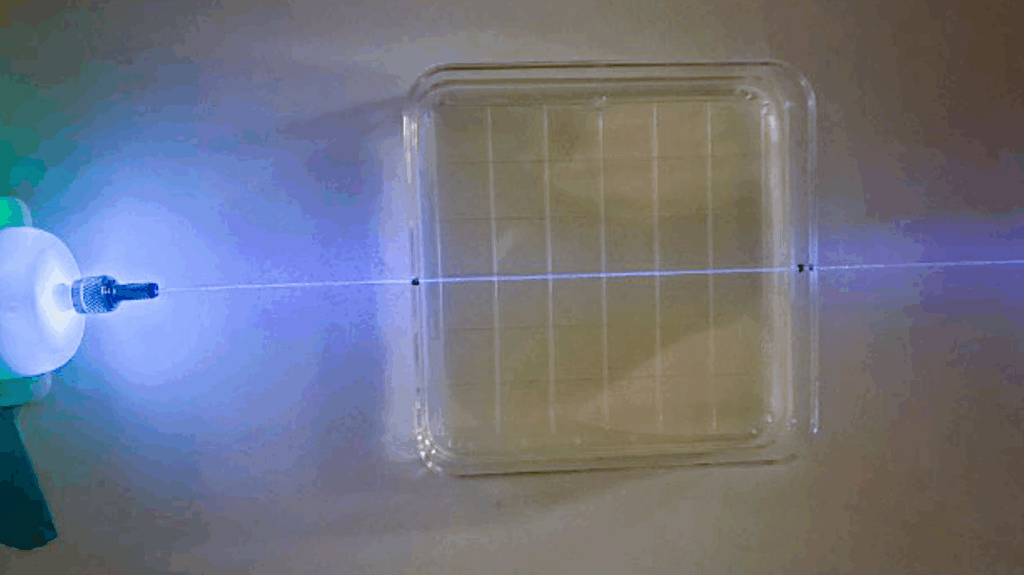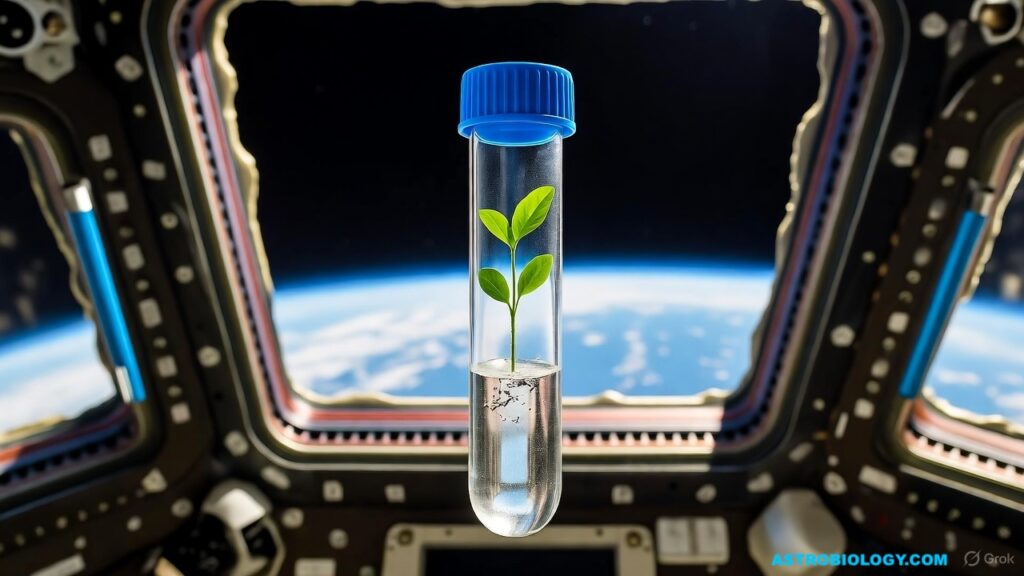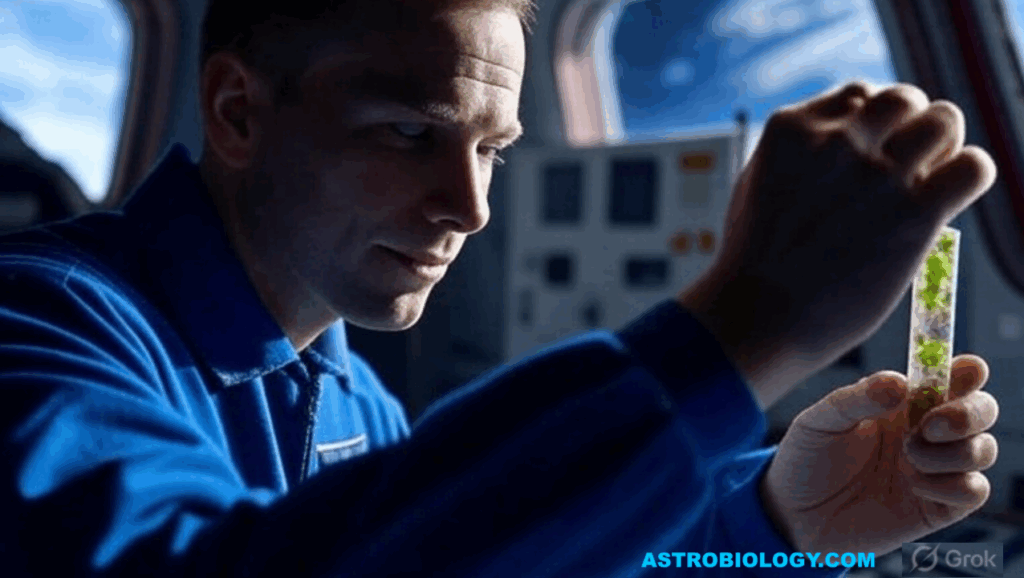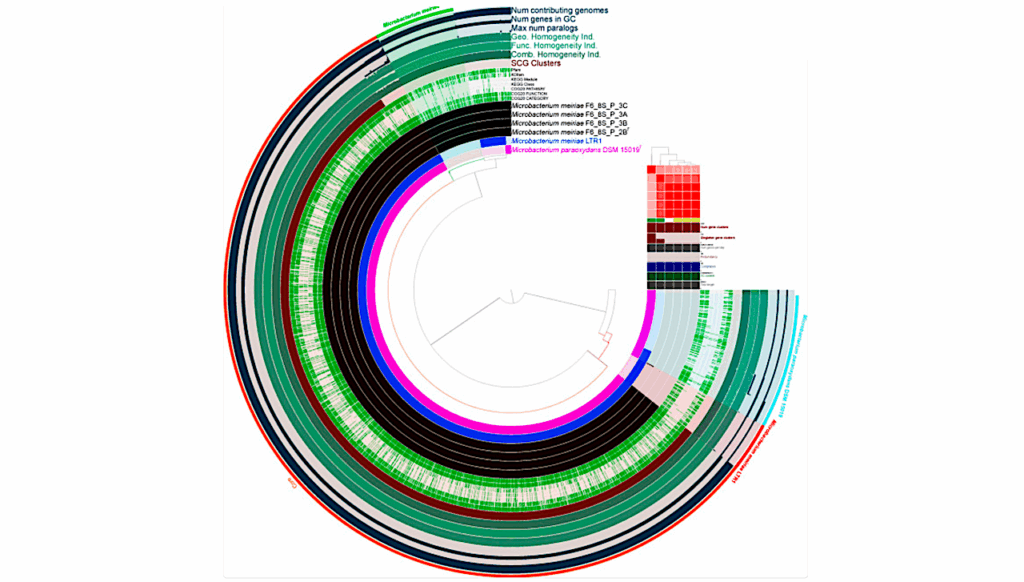NASA Spaceline Current Awareness List #1,173 7 November 2025 (Space Life Science Research Results)

NASA Spaceline Current Awareness List — Grok/Astrobiology.com
The abstract in PubMed or at the publisher’s site is linked when available and will open in a new window.
Papers deriving from NASA support:
- Yu K, Tuladhar A, Dankberg S, Dai C, McGee-Lawrence ME.Integrating 3D osteocyte culture, microgravity simulation, and fluid flow reveals mechanisms of osteocyte mechanosensation and calcium signaling altered by disuse.Biomolecules. 2025 Oct 31;15(11):1534.PI: M.E. McGee-LawrenceNote: This article is part of Special Issue “Calcium Signaling and Transport in Health and Disease: Recent Developments and New Insights” (https://www.mdpi.com/journal/biomolecules/special_issues/66M81Q7C82) and may be obtained online without charge.
Journal Impact Factor: 4.8
Funding: “This study was supported by NASA (Space Biology Grant #80NSSC21K0274).” - Miller KA, Trevino DT, Cauthorn G.Spirulina supported plant growth in regolith simulants and elevated levels of CO2.Front Space Technol. 2025 Nov 2;6:1651978.Note: This article is part of Research Topic “Microorganisms as Astro-pioneers for Long-term Sustainable Human Presence in Space” (https://www.frontiersin.org/research-topics/70040/microorganisms-as-astro-pioneers-for-long-term-sustainable-human-presence-in-space) and may be obtained online without charge.
Journal Impact Factor: 1.3
Funding: “This work was supported by NASA under proposal number 23-2023 R3-0040 issued through the Established Program to Stimulate Competitive Research (EPSCoR) Rapid Research Response (R3) funding opportunity #NNX23EXPLORA through the West Virginia Space Grant Consortium.” - Cavender-Bares J, White DM, Ahlstrand NI, Austin MW, Bastianelli D, Bazan S, Boughalmi K, Cardinal-McTeague W, Chacón-Madrigal E, Couvreur TLP, Davis C, Durgante FM, Grace OM, Guzmán QJ, Hansen K, Hernández-Leal MS, Hopkins MJG, Jackson R, Kothari S, Lee AK, Léveillé-Bourret É, Pinto-Ledezma J, Quinteros Casaverde NL, Meireles JE, Neto-Bradley B, Nichodemus CO, Ree RH, Schmull M, Soltis DE, Soltis PS, Tuomisto H, Ustin SL, Vasconcelos CC.Next-generation specimen digitization: Capturing reflectance spectra from the world’s herbaria for modeling plant biology across time, space, and taxa.New Phytol. 2025 Oct 31. Review. Online ahead of print.Note: This article may be obtained online without charge.
Journal Impact Factor: 2.06
Funding: N.L. Quinteros Casaverde is affiliated with NASA Goddard Space Flight Center. - Clark KB.Evolution of social “cognitive cell” adaptations in unicellular organisms with complex mating traits.Behav Brain Sci. 2025 Nov 3;48:e85. Review.Journal Impact Factor: 3.7
Funding: K.B. Clark is affiliated with NASA Ames Research Center. - Poplaski V, Patel TD, Nguyen-Phuc H, Kambal A, Bronk L, Estes MK, Coarfa C, Blutt SE.Distinct molecular responses of human intestinal organoids to proton and photon radiation.Am J Physiol Gastrointest Liver Physiol. 2025 Oct 30. Online ahead of print.PI: S.E. BluttNote: This article may be obtained online without charge.
Journal Impact Factor: 3.3
Funding: “This work was primarily supported by the Translational Research Institute for Space Health (TRISH) powered by the NASA Human Research Program and a cooperative agreement notice (NNX16AO69A) to S.E.B, M.K.E, and C.C.” - Sundiang M, Diniz Oliveira T, Mason-D’Croz D, Gibson M, Beier F, Benavidez L, Bodirsky BL, Bos A, Chepeliev M, Chen DM, de Lange T, Doelman J, Dunston S, Frank S, Fujimori S, Hasegawa T, Havlik P, Hristov J, Jägermeyr J, Kozicka M, Kuiper M, Kyle P, Lotze-Campen H, Luchtenbelt H, Mishra A, Müller C, Nelson G, Palazzo A, Pérez Domínguez I, Popp A, Sands R, Springmann M, Stehfest E, Sulser T, Takahashi K, Tassinari G, Thom F, Thornton P, Tsuchiya K, van Zeist WJ, van Meijl H, van der Mensbrugghe D, Van Vuuren D, van Zanten HHE, Weindl I, Wiebe K, Zhao X, Herrero M.Bundling measures for food systems transformation: A global, multimodel assessment.Lancet Planet Health. 2025 Oct;9(10):101339.Note: This article may be obtained online without charge.
Journal Impact Factor: 21.6
Funding: J. Jägermeyr is affiliated with NASA Goddard Institute for Space Studies.
Other papers of interest:
- Alzaabi AA, Alzaabi FM, Siddiqui RW, Siddiqui TW, Sami MM.Review of microgravity’s impact on cardiovascular and nervous systems in space exploration.npj Microgravity. 2025 Oct 30;11(1):77.Note: This article may be obtained online without charge.
- Anastasiadi AT, Tzounakas VL.From stress pathways to space biology: An odyssey in molecular and translational medicine.Biomedicines. 2025 Oct 21;13(10):2572.Note: This article is part of Special Issue “State-of-the-Art and Novel Approaches in Molecular and Translational Medicine in Europe” (https://www.mdpi.com/journal/biomedicines/special_issues/med_eur) and may be obtained online without charge.
- Fırat S, Opçin B, Yıldırım A.Impact of low-energy proton radiation on lentil seeds (Lens culinaris) for sustainable space breeding.Acta Astronaut. 2026 Feb;239:39-48.
- Huang Y, Ding L, Pei J, Li Y.Cognitive and physiological assessment in a Mars analog habitat: Implications for aerospace medical monitoring in hypobaric hypoxia.Acta Astronaut. 2025 Nov 4. Online ahead of print.
- Reimeir B, Maach S, Wargel A, Riedl F, Bangaru-Raju D, Eberle R, Grömer G, Federolf P.Adaptive, empirical models from analog EVA telemetry for traverse pacing and physiological response prediction in astronauts.Acta Astronaut. 2025 Oct 30. Online ahead of print.Note: From the abstract: “Environmental hazards and excessive physical exertion pose substantial risks to astronaut safety during planetary surface exploration. Individual differences in fitness and physical constitution among increasingly diverse crews necessitate the development of individualized models. This research aims to address these challenges by proposing an adaptive, data-driven pacing and physiological response model for extravehicular activities (EVA) based on spacesuit telemetry from analog astronauts.”
- Xu M, Chong P, Yu H, Zhang Z, Zhou H, Wang J, Qian A-R, Zhang W.Chapter 16 – Application of artificial intelligence and multiomic techniques in space biology and space biotechnology.In: Qian A-R, Lin X, Patil S, Farooq HMU, eds. Space Biology and Space Biotechnology: Academic Press, 2025. p. 239-60.
- Al-Dwairi A, Obeidat S, Shakhatreh A, Al-Shboul O, Alqudah M, Alfaqih MA, Al-U’datt D GF.The impact of hindlimb suspension on gastrointestinal integrity in aged rats: Segment-specific effects on inflammation and oxidative stress.Exp Gerontol. 2025 Dec;112955.
- Borovik AS, Zhedyaev RY, Negulyaev VO, Bogotskoy KA, Iashina VA, Tomilovskaya ES, Tarasova OS, Vinogradova OL.The change in phase shift between respiratory oscillations of mean arterial pressure and heart rate in head-up tilt test: The effect of simulated microgravity.Respir Physiol Neurobiol. 2025 Oct 27;339:104509.
- Borovik AS, Zhedyaev RY, Tomilovskaya ES, Shpakov AV, Orlov OI, Vinogradova OL, Tarasova OS.Three-week dry immersion results in a more severe impairment of cardiac baroreflex than head-down bedrest of the same duration.Eur J Appl Physiol. 2025 Oct 29. Online ahead of print.
- Ding Y, Fu Y, Sun M, Li Y, Li A, Li Y.Microgravity-driven Rab27B activation amplifies mesenchymal stem cell-derived extracellular vesicle production and functions.Stem Cell Res Ther. 2025 Oct 29;16:590.Note: A rotary cell culture system was used in this study. This article may be obtained online without charge.
- Rabineau J, Fournier R, Hedge ET, Mastrandrea CJ, Hughson RL.Reduced postural stability in men and women aged 55-65 following 14 days of head-down bedrest.Sci Rep. 2025 Oct 30;15:38015.Note: This article may be obtained online without charge.
- Zolotarev VI, Zolotareva AD, Kamkina OV, Shileiko SA, Mitrokhin VM, Bilichenko AS, Kazansky VE, Rodina AS, Mladenov MI, Kamkin AG.Hypergravity increases and simulated microgravity decreases the ion current through mechanically gated channels during stretching of isolated rat cardiomyocytes.Bull Exp Biol Med. 2025 Oct 31. Online ahead of print.Note: From the abstract: “Since hypergravity and simulated microgravity alter the morphological and physiological properties of the heart and the quantity of gene transcripts for mechanically gated channels (MGCs), it was hypothesized that cardiomyocyte sensitivity to stretching would be altered. Using the whole-cell patch-clamp technique during stretching of isolated cells, we have demonstrated that hypergravity in rats increases cardiomyocyte sensitivity to stretching, which manifests as a pronounced increase in the ion currents through MGCs in response to cell stretching.”
- Inci G, Warkad MS, Kang BG, Kim SO, Lee NK, Heo JI, Park SH, Kim JH, Kang HJ, Kim CH, Kim BH, Park SJ, Suh JG, Kim SC, Lim SS, Lee JY.FOXO3a upregulates DNA repair activities by transcriptional activation of target genes and provides the resistance to gamma radiation and the extension of lifespan in mouse.Biogerontology. 2025 Oct 28;26(6):196.
- Chlebek C, McAndrews C, Aaronson B, Welhaven HD, Yu K, Costa SN, Shaver J, Silvia S, DeMambro VE, June RK, McGee-Lawrence ME, Rosen CJ.In C57BL/6J mice, weight loss in previously obese mice reduced bone mass and shifted the cortical bone metabolome.Bone. 2025 Oct 27;202:117690.
- Sheng F, Gao Y, Wang Y, Li Y, Zhang J-A, Zhang Z, Qin X, Zhang S, Song W, Li J, Guo Y, Friml J, Gong Z, Zhang Q, Zhang J.Antagonistic SnRK2 and PID kinases’ action on auxin transport-mediated root gravitropism.Proc Natl Acad Sci USA. 2025 Sep 23;122(39):e2512274122.Note: This article may be obtained online without charge.
astrobiology, space biology, space medicine, microgravity, ISS,








